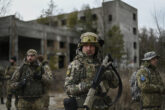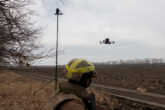June 01, 2018
The Bottom Line
Analysis of the 2019 Defense Budget Request
Executive Summary
2019 presented a very rare opportunity for the Department of Defense to change the shape of the future joint force: the Trump administration has set a new strategic direction in its National Security Strategy and National Defense Strategy and received a significant influx of cash from Congress with which to implement these strategies. However, the 2019 DoD budget request does not take full advantage of this opportunity. Increases in procurement spending largely go to buying or upgrading legacy systems like the Abrams tank, Bradley Fighting Vehicle, and F/A-18E/F Super Hornets. There are some notable exceptions, including increased investment in the Air Force’s Next Generation Air Dominance program and growth in science and technology investment. However, for the most part, the request focuses on legacy systems.
This approach is not unreasonable. The budget future remains uncertain; Budget Control Act (BCA) caps return in 2020 absent another deal. The DoD has cash in hand today, but doesn’t know if it will tomorrow, and so it is wise to spend that money on things that can deliver today. Money invested in developing new systems is wasted unless there is funding available in the future to bring those systems into production. Nonetheless, the 2019 budget request supports a force that is less advanced than what one would expect, given the strategy’s emphasis on strategic competition with China and Russia. The Trump administration will not get another opportunity like the 2019 planning cycle, now that the administration’s strategic direction is set and the best-case budget scenario is a flat topline through 2023.
Introduction
The Office of Management and Budget (OMB) released President Trump’s fiscal year 2019 budget request on February 12, 2018. This budget request is the first that will have been prepared entirely during the current administration, so it should accurately reflect this administration’s world view and priorities.
The administration requested $716 billion for national defense, or about 7 percent more than it requested for fiscal year 2018. Of this total, $686 billion will go to the Department of Defense, while the remainder will fund non-DoD national defense requirements (e.g., nuclear weapons programs at the Department of Energy).1 Two percent of that increase covers only inflation, and another two percent covers the expected cost growth exceeding inflation in maintenance and personnel accounts. Taking these considerations into account, DoD is left with about $20 billion in new money to apply to its chosen priorities.
The new Bipartisan Budget Act, which sets spending levels for fiscal years 2018 and 2019, significantly increased the defense budget – the most significant increase we’ve seen since the early days of the wars in Iraq and Afghanistan.2 But the real question is, how will the department spend it? The new National Defense Strategy gives us some clues.3 The strategy’s prioritization of strategic competition with China and Russia means that the budget should reflect an emphasis on investing in advanced capabilities, rather than solely increasing the size of the force. Similarly, the strategy’s language on force employment suggests a recalibration in favor of preserving readiness at the expense of some presence activities that are not focused on improving the military’s ability to deter or respond to conflict. 4 The 2019 defense budget request does include these investments, to an extent. However, the bulk of the request’s increase for 2019 went toward marginal improvements to legacy systems. Without doubt, this budget request repairs damage done by the deep and indiscriminate cuts imposed over the past several years by the Budget Control Act of 2011, improving readiness balance in the defense investment program. But given the strategy’s bold prioritization of strategic competition with China and Russia, the relative size of investment in advanced capabilities remains somewhat unsatisfying. This report will explore these issues and more, providing in-depth analysis of each military department’s request and the request for the defense-wide accounts. But first …
The full report is available online.
- Executive Office of the President, Office of Management and Budget, Analytical Perspectives: Budget of the U.S. Government Fiscal Year 2018, https://www.gpo.gov/fdsys/pkg/BUDGET-2018-PER/pdf/BUDGET-2018-PER.pdf. ↩
- U.S. House of Representatives, Bipartisan Budget Act of 2018, H.R.1892, 115th Congress, https://www.congress.gov/bill/115th-congress/house-bill/1892. ↩
- Department of Defense, Summary of the 2018 National Defense Strategy of the United States of America, (January 19, 2018), https://www.defense.gov/Portals/1/Documents/pubs/2018-National-Defense-Strategy-Summary.pdf. ↩
- Susanna V. Blume, “How the United States Can Get More Strategic Bang for Its Force Structure Buck,” War on the Rocks, February 01, 2018, https://warontherocks.com/2018/02/united-states-can-get-strategic-bang-forcestructure-buck/. ↩
A complete list of citations is available in the PDF.
More from CNAS
-
Defense / Transatlantic Security
When Defense Becomes Destruction: Austria-Hungary’s Mistake and Ukraine’s RiskThis article was originally posted on War on the Rocks. The southeastern Polish city of Przemyśl, with its elegant 19th century Habsburg-era train station, remains one of the ...
By Franz-Stefan Gady
-
Defense / Transatlantic Security
Ukraine’s Catch-22 MomentThis article was originally published in the Financial Times. In Joseph Heller’s wartime classic, Catch-22, the protagonist Yossarian seeks out the US army surgeon Doc Daneeka...
By Franz-Stefan Gady
-
CNAS Insights | Budgetary Own Goals Undermine “Speed and Volume”
On November 7, Secretary of Defense Pete Hegseth laid out a plan to overhaul the Department of Defense’s (DOD’s) acquisition system. Placing an emphasis on delivering new capa...
By Philip Sheers, Carlton Haelig & Stacie Pettyjohn
-
Drones: Who Is Making the New Weapons of War?
From Ukraine and Russia to Gaza and Sudan, drones have become a key weapon of war. Which companies are making them, and profiting from this rapidly expanding but controversial...
By Stacie Pettyjohn






